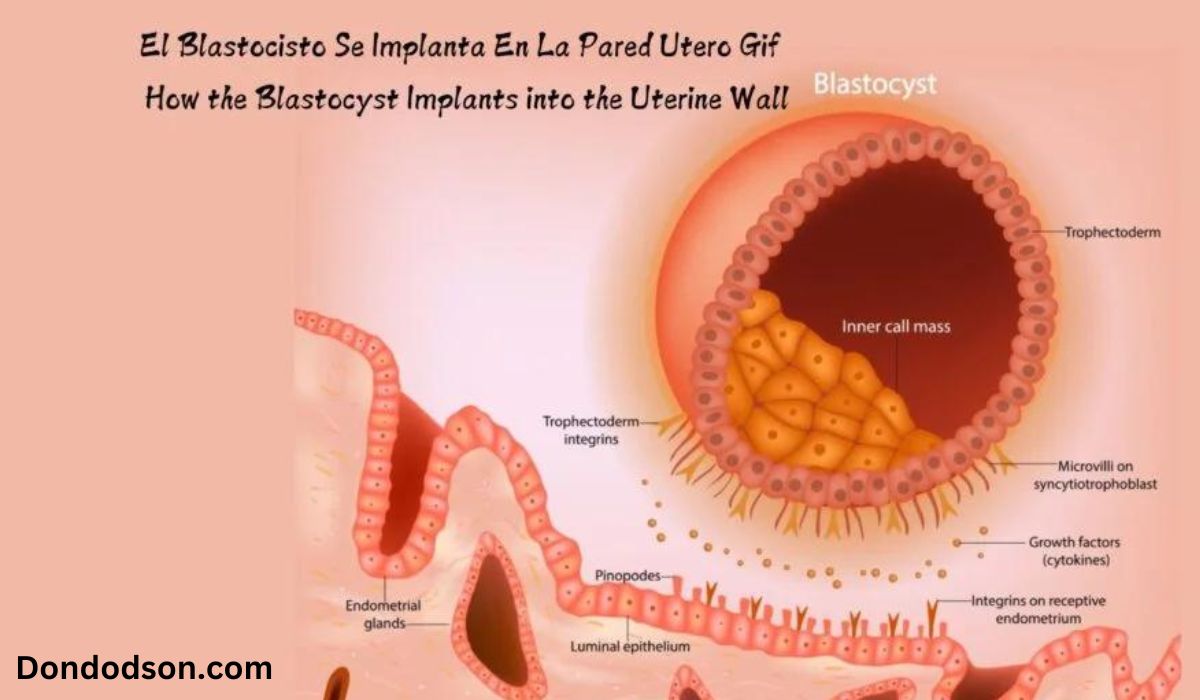Introduction
The journey from fertilization to pregnancy is nothing short of extraordinary. One of the most crucial steps in this journey is the implantation of the blastocyst in the uterine wall. Understanding this process is key to appreciating how life begins. In this article, we’ll explore what happens when “el blastocisto se implanta en la pared utero gif,” shedding light on this fundamental aspect of human development.
The Wonderful Journey of the Blastocyst: Implantation!
What is Implantation?
Implantation is the process by which a fertilized egg, now known as a blastocyst, attaches itself to the lining of the uterus. This step is vital for establishing a pregnancy, as it marks the point where the embryo starts to receive nutrients and oxygen from the mother. El blastocisto se implanta en la pared utero gif
The Importance of Implantation in Pregnancy
Implantation is crucial because it initiates the development of the placenta, which supports the embryo by providing necessary nutrients and removing waste. Without successful implantation, a pregnancy cannot be established.
What is a Blastocyst?
Clear and Simple Definition
A blastocyst is a structure formed in the early stages of embryonic development. It consists of a hollow ball of cells with an inner cell mass that will develop into the fetus and an outer layer called the trophoblast that will form the placenta.
Comparison to a Fertilized Egg
A fertilized egg, or zygote, is the initial stage of development following sperm and egg fusion. As it divides and grows, it becomes a blastocyst, which is ready for implantation into the uterine lining.
The Role of the Blastocyst in Conception
The primary role of the blastocyst is to implant itself in the uterine wall, where it can begin the process of developing into a fetus. This step is essential for the continuation of pregnancy.
The Implantation Process Step by Step
Arrival in the Uterus
After fertilization, the blastocyst travels through the fallopian tube and into the uterus. This journey takes about 6-7 days.
Adhesion to the Uterine Wall
Upon reaching the uterus, the blastocyst attaches to the uterine lining. This involves the trophoblast cells embedding into the endometrium (uterine lining), initiating the formation of the placenta.El blastocisto se implanta en la pared utero gif
Formation of the Placenta
Once implanted, the blastocyst starts to develop the placenta, which will sustain the embryo throughout pregnancy by providing nutrients and oxygen and removing waste products.
Why is Implantation So Important?
The Beginning of Life
Implantation marks the beginning of a new life. It’s the moment when the embryo starts to establish a direct connection with the mother’s blood supply.
Embryonic Development
Successful implantation allows the embryo to start developing into a fetus. The uterine environment provides the necessary conditions for growth and development.
Formation of Organs and Systems
Following implantation, the embryo begins to form vital organs and systems, laying the foundation for future development and growth.
Factors Affecting Implantation
Woman’s Reproductive Health
Overall reproductive health plays a significant role in implantation success. Healthy hormonal levels and a well-maintained uterine lining are crucial.
Maternal Age
Age can impact fertility and implantation success. Older women may face more challenges due to changes in egg quality and uterine environment.
Lifestyle
Healthy habits such as a balanced diet, regular exercise, and avoiding smoking and excessive alcohol can positively influence implantation success.
Medical Conditions
Certain medical conditions, such as endometriosis or polycystic ovary syndrome (PCOS), can affect the likelihood of successful implantation.
Implantation in In Vitro Fertilization (IVF)
The IVF Process
IVF involves the fertilization of eggs outside the body and then implanting the resulting embryos into the uterus.
Embryo Transfer
During IVF, a developed blastocyst is transferred into the uterine cavity. Success depends on the embryo’s ability to implant and the health of the uterine lining.
Implantation Success Rate
Success rates for implantation during IVF vary, but advancements in techniques and medications have improved outcomes over the years.
Visualizations: GIFs and Animations
Explanatory GIFs
GIFs can visually illustrate the implantation process, showing how the blastocyst attaches to the uterine lining.
3D Animations
3D animations provide a more detailed representation of implantation, offering a clear view of how the blastocyst embeds itself in the uterus.
Comparison with Real Images
Comparing GIFs and 3D animations with real images helps enhance understanding by providing both conceptual and actual visual contexts.
You May Also Like: Understanding the Vt1000 In Subzero lng Environment
Conclusion
Implantation is a critical phase in the journey from fertilization to pregnancy. The successful embedding of the blastocyst in the uterine wall marks the beginning of a new life and sets the stage for embryonic development. Understanding this process and its importance highlights the complexity and wonder of human reproduction.
FAQs
1. How long does implantation take? Implantation typically occurs 6-7 days after fertilization. The process of embedding into the uterine lining can take a few days to complete.
2. What are the symptoms of implantation? Symptoms can include light spotting, mild cramping, or changes in basal body temperature. Some women may not experience any symptoms.
3. What happens if implantation doesn’t occur? If implantation doesn’t occur, the embryo is expelled from the uterus and absorbed by the body. This results in the start of a new menstrual cycle.
4. How to increase the chances of implantation? Maintaining a healthy lifestyle, managing stress, and ensuring proper uterine health can increase the chances of successful implantation.
5. What is the role of GIFs in understanding implantation? GIFs visually demonstrate the implantation process, helping to conceptualize how the blastocyst attaches to the uterine wall and starts developing.











